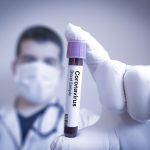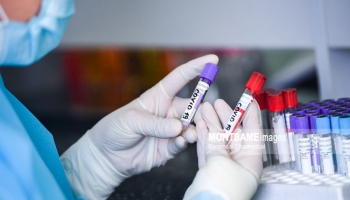
An outbreak of coronavirus disease-19 (COVID-19) infection began in December 2019 in
Wuhan, the capital of central China’s Hubei province [1, 2]. While the virus likely has a zoonotic
origin related to the city’s Huanan Seafood Market, widespread human-to-human transmission
has resulted in 73,451 cases in 26 countries with 1,875 deaths as of February 18, 2020 [3 –
7]. Disease was first reported in the United States on January 20, 2020, and the total number of
cases in the United States has reached 15 as of February 17, 2020 [7, 8]. The most common
presenting clinical symptoms are fever and cough in addition to other non-specific
symptomatology including dyspnea, headache, muscle soreness, and fatigue [9]. About 20% of
cases are severe, and mortality is approximately 3% [10]. The World Health Organization
(WHO) declared a global health emergency on January 30, 2020 [11].
This is the seventh known coronavirus to infect humans [1]. Two other notable examples
include severe acute respiratory syndrome (SARS) and Middle East respiratory syndrome
(MERS), the former of which began in southern China and resulted in 774 deaths out of 8,098
infected individuals in 29 countries from November 2002 through July 2003, and the latter of
which originated in Saudi Arabia and was responsible for 848 deaths among 2,458 individuals in
27 countries through July 2019.
As clinical physicians, epidemiologists, virologists, phylogeneticists, and others work with public
health officials and policymakers to understand infection pathogenesis and control disease
spread, some early investigators have observed imaging patterns on chest radiography and
computed tomography (CT) [14 – 25]. For instance, an initial prospective analysis in Wuhan
revealed bilateral lung opacities on 40 of 41 (98%) chest CTs in infected patients and described
lobular and subsegmental areas of consolidation as the most typical findings [4]. Other
investigators examined chest CTs in 21 infected patients and found high rates of ground-glass
opacities and consolidation, sometimes with a rounded morphology and peripheral lung
distribution [26]. Another group evaluated lung abnormalities related to disease time course and
found that chest CT showed the most extensive disease approximately ten days after symptom
onset. [16]. Thoracic radiology evaluation is often key to the evaluation of patients suspected of
COVID-19 infection. Prompt recognition of disease is invaluable to ensure timely treatment, and
from a public health perspective, rapid patient isolation is crucial for containment of this
communicable disease.



![Ulaanbaatar [1.4 million people get first dose of COVID-19 vaccine]](https://capitalsinitiative.com/wp-content/uploads/thumbs_dir/60a1e65c706f1-1y44tn2lku72ys2oyrnxem2r2g6vp4si1kmalxcjaug4.jpeg)
![Ulaanbaatar [Over 1.5 million involved in COVID-19 testing nationwide]](https://capitalsinitiative.com/wp-content/uploads/thumbs_dir/6010fd2a7d4f2-1xlr25fmpk06yhym156ag12rpcvacepvna64fmsptc4k.jpeg)

![Ulaanbaatar [Hair and beauty salons, non-grocery stores reopen today]](https://capitalsinitiative.com/wp-content/uploads/thumbs_dir/600baab4cff61-1xlr1u6xb5g4y36pw0dcqpiw8pax34lczrv0lk7tvj50.jpeg)
